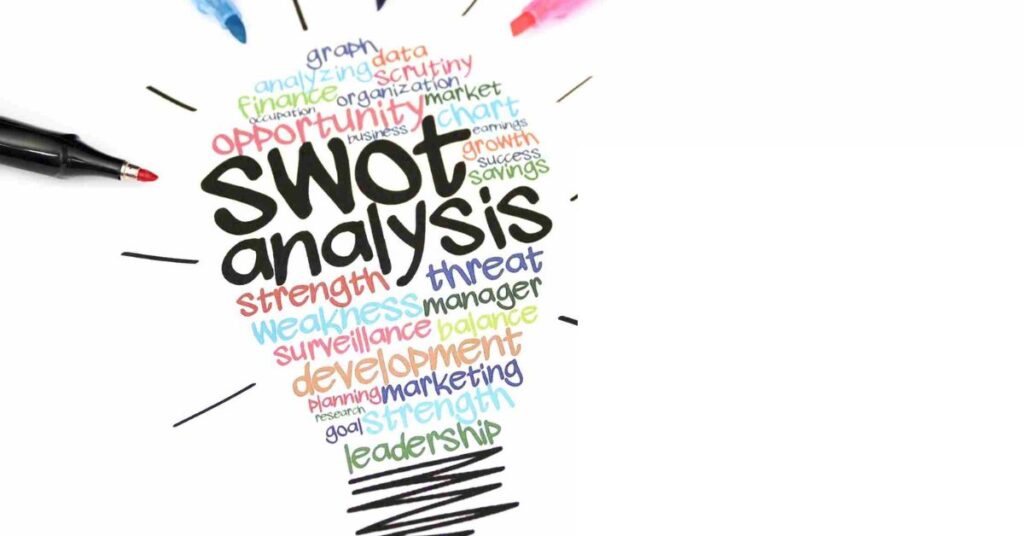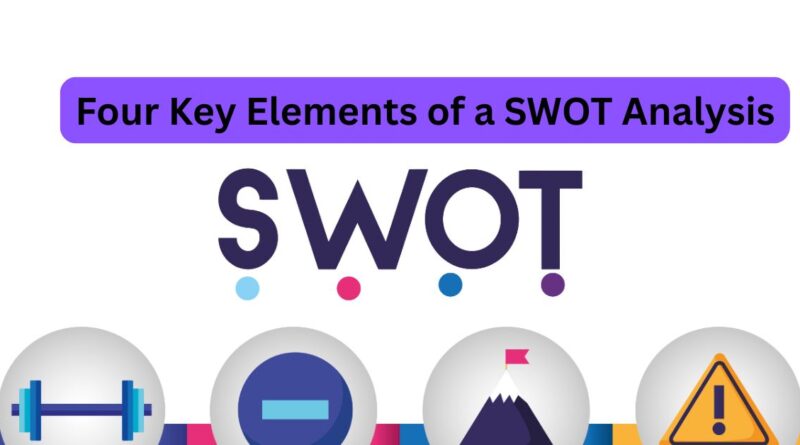How SWOT Analysis Helps You Make Smarter Strategic Decisions
SWOT analysis is a strategic planning tool that helps individuals and organizations identify their internal strengths and weaknesses along with external opportunities and threats. This analysis is essential for understanding current conditions evaluating future prospects and making informed decisions. The acronym SWOT stands for Strengths Weaknesses Opportunities and Threats and each of these components plays a unique role in providing a comprehensive view of a situation. By carefully examining all four parts organizations can develop strategies that align with their objectives and respond effectively to changes in the environment. Understanding these elements in depth is crucial for applying SWOT analysis effectively and using it as a foundation for long-term growth and success.
1.Strengths
The first component of a SWOT analysis is Strengths. These are the internal attributes and resources that give an individual business or organization a competitive advantage. Strengths can come in many forms including physical assets intellectual property skilled employees strong leadership established brand reputation robust financial resources loyal customer base or advanced technology. Identifying strengths allows an organization to understand what it does well and how it can leverage those qualities to achieve its goals. For instance a company that has a strong brand and customer loyalty can use this strength to introduce new products with a higher chance of success. Strengths also help businesses differentiate themselves from competitors by offering something unique or of higher value. In some cases strengths may not be fully utilized or recognized until they are examined closely during a SWOT analysis. For example a company might discover that its customer service is a key reason for repeat business or that its employees possess niche skills that can be used to expand into new markets. When conducting a SWOT analysis it is important to focus on real tangible strengths rather than general or vague ideas. Using data metrics and customer feedback can help support the identification of genuine strengths. By knowing what sets them apart organizations can better position themselves in the market and build on their successes.
2.Weaknesses
The second part of a SWOT analysis is Weaknesses. These are internal factors that may hinder the ability to achieve goals or compete effectively. Weaknesses could include outdated technology insufficient marketing poor customer service lack of expertise limited resources or inefficient processes. Identifying weaknesses is not about pointing fingers or assigning blame but about gaining a realistic understanding of areas that need improvement. Just as strengths can be leveraged weaknesses must be addressed to minimize their impact. For example if a business struggles with employee turnover it may need to examine its management practices work culture or compensation structure. If a product consistently receives negative feedback the company must investigate its design quality or pricing. In this way weaknesses highlight the gaps that must be closed to move forward successfully. A thorough and honest evaluation of weaknesses is critical for developing effective strategies. Often businesses are hesitant to admit their shortcomings but ignoring weaknesses can lead to larger problems over time. A good SWOT analysis is transparent and self-aware which allows for growth and improvement. When weaknesses are identified action plans can be created to overcome them such as training staff improving systems investing in new equipment or updating outdated practices. Ultimately addressing weaknesses strengthens the foundation of the organization and increases its resilience.
3.Opportunities
The third component of SWOT analysis is Opportunities. These are external conditions that the organization or individual can exploit to their advantage. Opportunities may arise from changes in the market emerging trends technological advancements shifts in consumer behavior or gaps left by competitors. Identifying opportunities requires looking beyond the internal environment and analyzing external factors that can influence success. For example a growing demand for eco-friendly products presents an opportunity for a business to develop sustainable alternatives. Similarly the expansion of digital platforms can create new channels for marketing and sales. Opportunities can also come from partnerships collaborations or entering new geographical markets. One of the key benefits of identifying opportunities through a SWOT analysis is the ability to act proactively rather than reactively. By staying informed about industry developments regulatory changes and customer needs businesses can position themselves to take advantage of favorable conditions. Recognizing opportunities early allows organizations to plan strategically allocate resources efficiently and innovate in ways that meet demand. It is also important to prioritize opportunities based on potential impact feasibility and alignment with long-term goals. Not every opportunity is worth pursuing and some may require significant investment or carry risk. By evaluating them carefully organizations can focus on the most promising areas for growth. Opportunities often reflect the dynamic nature of the external environment and seizing them can lead to competitive advantages and long-term success.
4.Threats
The final element of a SWOT analysis is Threats. These are external challenges or risks that may negatively impact performance growth or reputation. Threats can come from a variety of sources such as economic downturns increased competition changing regulations shifts in consumer preferences or technological disruptions. Unlike weaknesses which are internal and controllable threats are usually outside the organization’s direct influence. However recognizing them allows for preparation and mitigation. For example if a new competitor enters the market with lower prices a company may need to adjust its pricing strategy or enhance its value proposition. If there is a potential regulatory change that could affect operations businesses should begin compliance planning in advance. Threats can also emerge from global events such as pandemics supply chain disruptions or political instability. The key is to stay vigilant and informed so that these external risks do not catch the organization off guard. Identifying threats as part of a SWOT analysis enables risk management and contingency planning. Companies can develop strategies to reduce exposure adapt their operations or diversify their offerings to minimize the impact of external threats. It is important not to underestimate threats or assume they will go away on their own. Regular monitoring of the external environment and scenario planning can help organizations stay agile and responsive. When threats are addressed early their impact can often be reduced or even turned into opportunities. For example a company facing a declining market might pivot to a related sector that is experiencing growth. In this way threats while challenging can also serve as catalysts for change and innovation when handled effectively.
Combining All Four Parts for Strategic Planning
When all four components of a SWOT analysis are brought together the result is a comprehensive picture of the internal and external environment. This analysis provides valuable insights that guide strategic planning and decision-making. By understanding their strengths organizations can build confidence and capitalize on what they do best. By acknowledging weaknesses they can work on self-improvement and become more competitive. By identifying opportunities they can innovate and grow in ways that align with trends and demands. And by preparing for threats they can safeguard their future and remain resilient in times of change. Conducting a SWOT analysis is not a one-time activity. It should be revisited regularly to ensure that strategies remain relevant and responsive to changes in both internal capabilities and external conditions.

In fast-paced industries this may mean conducting a SWOT analysis quarterly while in more stable sectors an annual review may be sufficient. Involving key stakeholders in the process can also add valuable perspectives and encourage buy-in for resulting strategies. A well-executed SWOT analysis can also be integrated with other strategic tools such as PEST analysis competitor analysis and customer feedback to create a more detailed and actionable plan. The true power of SWOT lies in how the findings are used. Simply listing strengths weaknesses opportunities and threats is not enough. The insights must be translated into goals priorities and actions. For example if a strength is a highly skilled workforce then investing in professional development can amplify this asset. If a threat is increased regulation then developing compliance protocols can reduce risk. The interconnections between the four components can also reveal strategic directions. A weakness can be neutralized by leveraging a strength. An opportunity may only be viable if certain weaknesses are addressed. A threat can be minimized by capitalizing on a strength. Viewing the SWOT components as interconnected rather than isolated makes the analysis more powerful and relevant.
Personal SWOT Analysis
For individuals conducting a personal SWOT analysis the same principles apply. Strengths might include communication skills leadership experience or creative talent. Weaknesses could involve time management lack of technical knowledge or fear of public speaking. Opportunities might involve new job openings educational programs or networking events. Threats could include economic uncertainty competition in the job market or personal obligations that limit availability. A personal SWOT analysis can help individuals set career goals make life decisions and identify areas for self-growth. Whether used for a business project personal goal or team strategy SWOT analysis is a flexible tool that encourages reflection planning and action. It promotes a balanced view that takes both positive and negative factors into account fostering strategic thinking that is realistic and proactive. It also encourages open discussion and collaboration especially in team settings where diverse perspectives can lead to a more nuanced and complete understanding of the situation.
Conclusion
In conclusion the four parts of a SWOT analysis are Strengths Weaknesses Opportunities and Threats. Each plays a critical role in understanding the current state and future potential of an organization or individual. Strengths reveal what is working well and provide a foundation to build upon. Weaknesses identify areas that require improvement and caution. Opportunities highlight where growth and innovation can occur. Threats show what risks exist and how to prepare for them. When these elements are analyzed together they offer a comprehensive framework for making informed strategic decisions. SWOT analysis helps uncover hidden advantages anticipate challenges and align goals with actions. It encourages a deeper understanding of both internal dynamics and external forces making it an invaluable tool for planning development and success in a wide range of contexts.
Frequently Asked Questions (FAQ)
What is the purpose of SWOT analysis
The purpose of SWOT analysis is to provide a clear understanding of internal strengths and weaknesses as well as external opportunities and threats which helps in making strategic decisions and planning for future growth.
How often should SWOT analysis be conducted
It is ideal to conduct SWOT analysis at least once a year or whenever major changes occur in the business environment to keep strategies updated and relevant.
Can individuals use SWOT analysis for personal development
Yes individuals can use SWOT analysis to assess their skills challenges career opportunities and risks helping them set goals and make informed decisions.
What is the difference between weaknesses and threats
Weaknesses are internal limitations within an organization or person while threats are external factors that pose risks or challenges from the outside environment.
Is SWOT analysis used only in business
No SWOT analysis is used across various fields including education nonprofit organizations government projects and personal growth initiatives.




